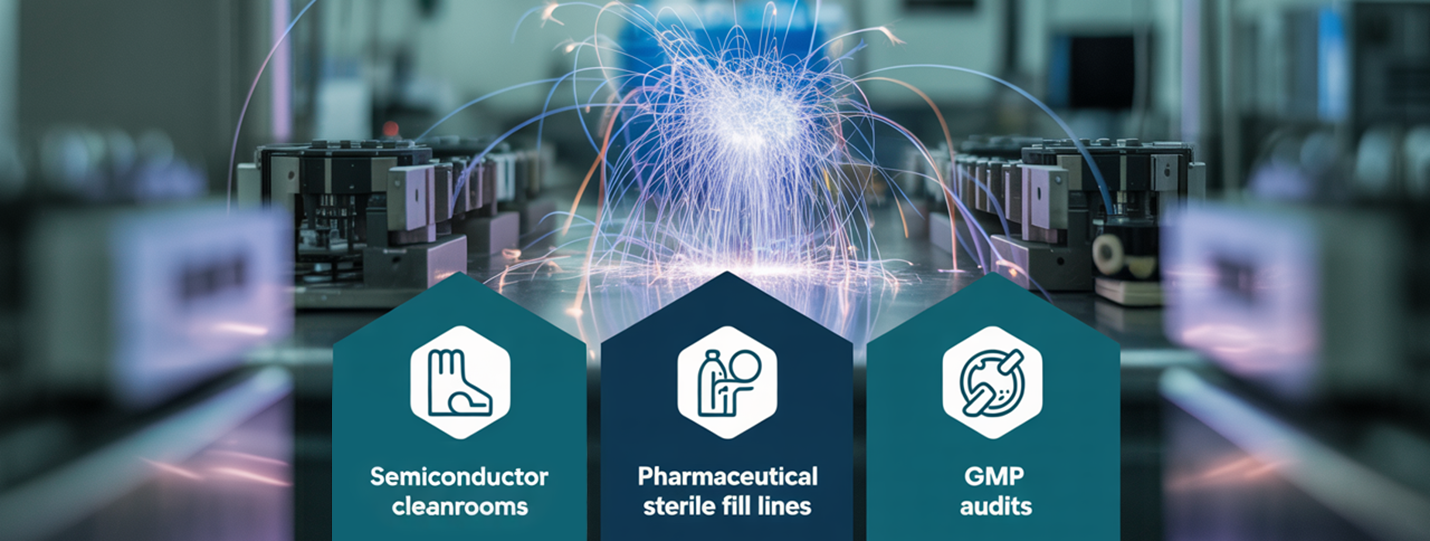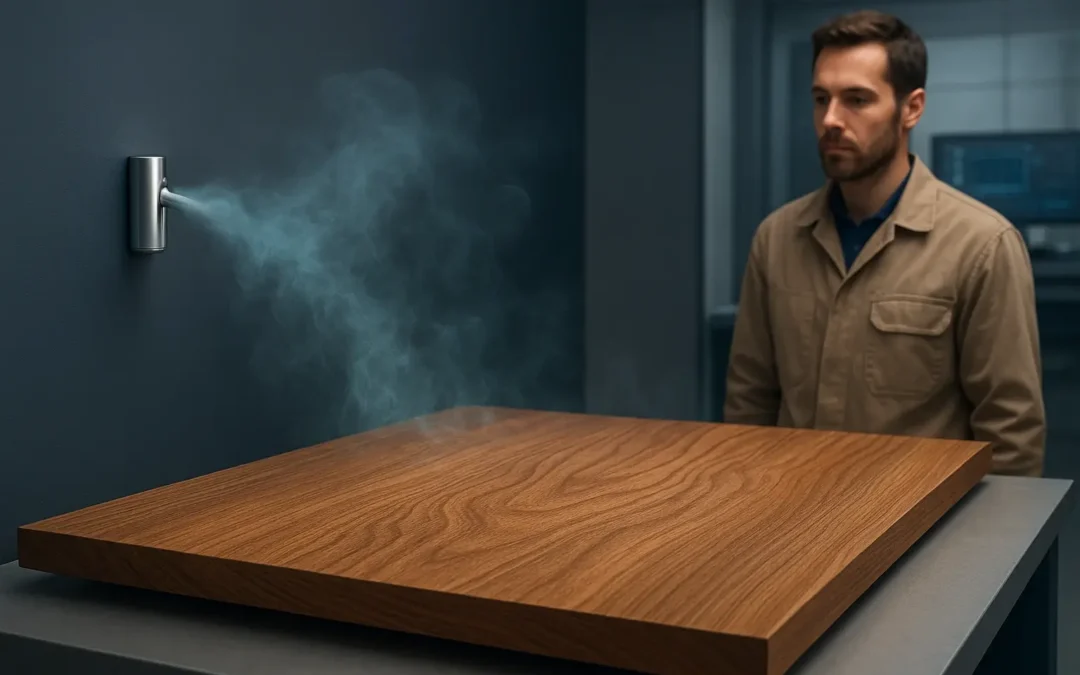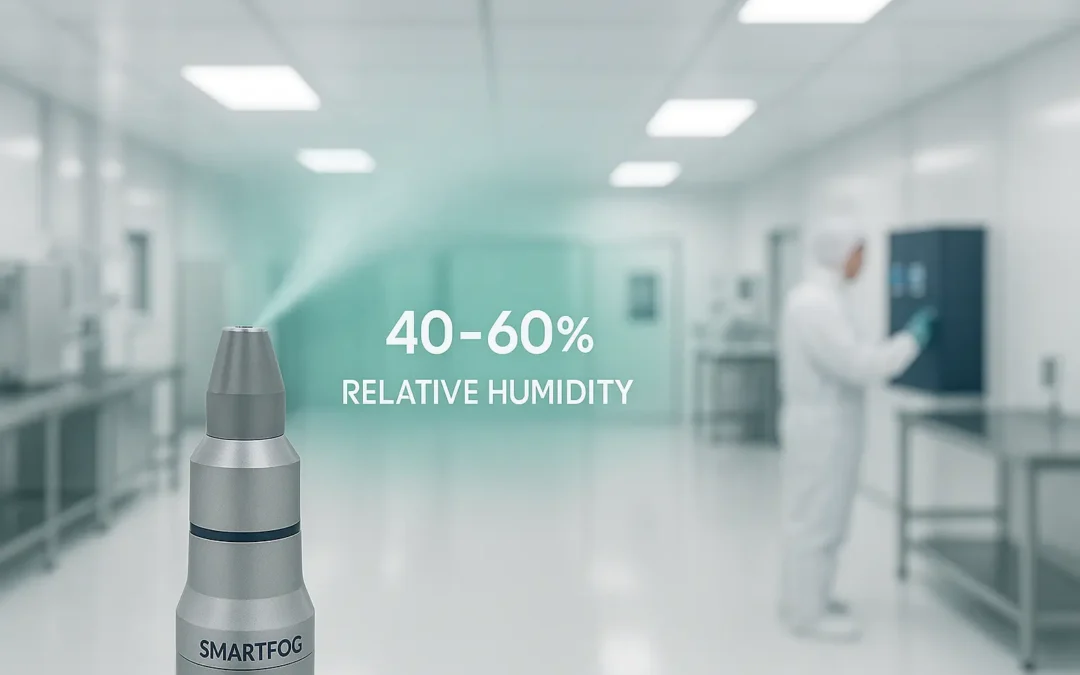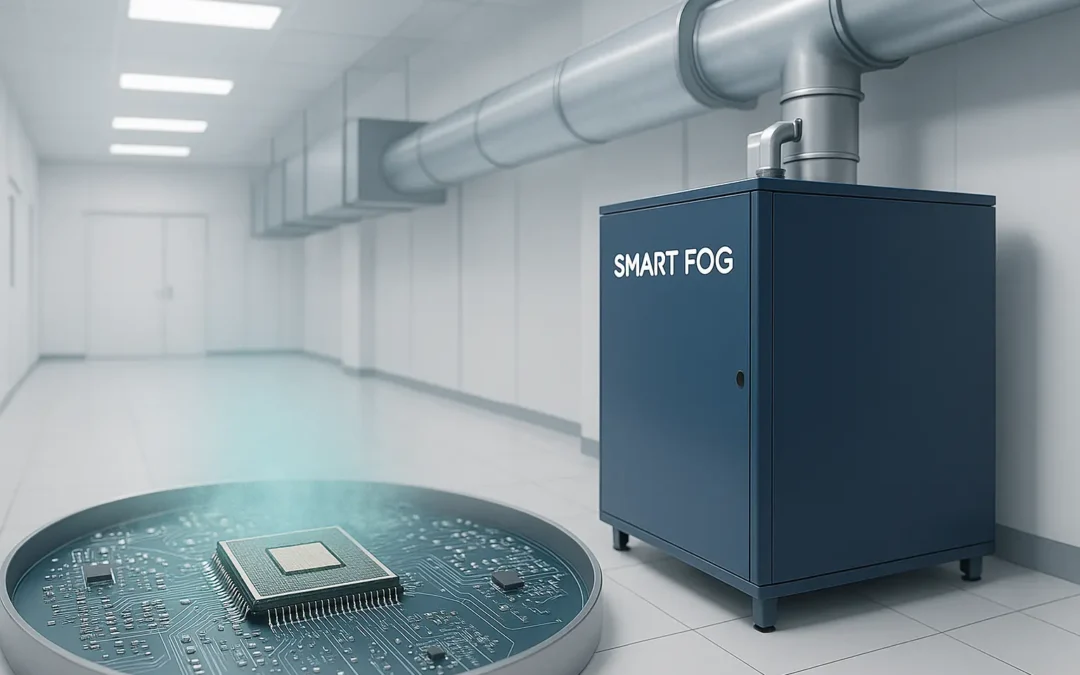Introduction — The Invisible Cleanroom Threat
Cleanrooms are designed to control the most obvious threats: visible dust, bacterial contamination, airborne debris that could compromise pharmaceutical sterility or short out a microchip. You see stainless walls, HEPA filters, operators in full gowns. It feels sterile, contained, under control.
But there’s a silent, invisible threat that escapes most routine environmental monitoring and still devastates yields and compliance — static electricity.
Walk into a semiconductor fab or a sterile compounding suite and you’ll see gowns and shoe covers, but you can’t see the hundreds or thousands of volts of static that accumulate on people, packaging films, work surfaces, or even metal benches as they interact. In fact, most ESD (electrostatic discharge) events happen below the human detection threshold of ~3,500 volts, meaning operators never feel a zap. But microelectronic components can fail at 30–100 volts. Even delicate surface or powder fills in pharma may be disrupted by static pulling particles or fibers from across the room.
Meanwhile, standard facility HVAC systems aren’t designed to monitor or mitigate static. They handle temperature, pressure, and perhaps rough humidity bands, but none of them actively discharge surfaces or neutralize electrostatic fields. That leaves your entire contamination control strategy resting on an ungrounded risk that literally clings to your processes.
In this post, we’ll break down exactly why static forms so easily in GMP and ISO cleanroom environments, the costly ways it erodes your yields and audit performance, and why precise humidity combined with natural ionisation is the only reliable, chemical-free fix.
Why Cleanrooms Are Statistically Prone to Static Problems
It might seem ironic that the very features which make cleanrooms “clean” also make them perfect static generators. Think about it:
- Low humidity by design: Many cleanrooms run under 45% RH to limit moisture that could support microbial growth. But static thrives in dry air, where charges accumulate and don’t bleed off easily.
- Laminar airflow: High-volume HEPA or ULPA flows designed to push contaminants down and away also create consistent friction on surfaces and even on operators moving through the air. That friction builds static.
- Synthetic gowns and materials: Most gowns, boot covers, hair nets, and wipes are made of synthetics to avoid linting. But synthetics are excellent charge holders and transfer easily to surfaces.
- Minimal grounding paths: Stainless benches and carts might appear grounded but often aren’t bonded through true conductive straps back to earth grounds, especially with newer modular systems. Meanwhile, plastics, polymer bins, and poly films are entirely non-conductive.
The result? As operators move through these spaces, they accumulate charge on themselves and on anything they handle. Plastic trays and foil pouches pick up charge from friction and keep it. Static potentials of 2,000–8,000 volts are routinely measured in cleanrooms — well above thresholds that damage sensitive electronics or quietly pull particles from across the room right onto your critical surfaces.
The Hidden Ways Static Eats Yields and Sabotages Audits
In semiconductor fabs and electronics cleanrooms:
- A static discharge of even 100 volts can degrade gate oxides, invisibly damaging chips that pass initial tests but fail weeks later in field use. This drives warranty costs, field returns, and damages brand trust.
- Static also attracts particles that ruin lithography steps, causing critical defects that aren’t caught until late-stage inspection, wasting entire wafers.
In pharmaceutical sterile fill lines:
- Static pulls microfibers or dust directly onto fill nozzles, ampoules, and stoppers. Under visual inspection or during particulate monitoring, these show up as foreign matter failures — triggering lot holds, extensive root cause investigations, and regulatory notifications.
- It’s also notorious for causing powders to leap or cling, disrupting uniform fills in cytotoxic or high-potency lines.
For GMP audits:
- Inspectors increasingly look for evidence of environmental static management. Seeing unexpected particle excursions in areas with otherwise perfect gowning or HEPA metrics often leads to deeper reviews. Static leaves behind tell-tale signatures like consistent particle attraction at certain workstations.
But the worst part is these aren’t headline-grabbing breakdowns. They’re incremental — a few more micro-defects per wafer run, a few extra “investigative holds” per quarter, slightly higher rework on packaging lines. Over months and years, these silent losses become seven-figure problems, all because of an uncontrolled force you literally cannot see.
Why HVAC and Ion Bars Alone Can’t Truly Protect You
HVAC systems were never designed for static control. They aim to maintain temperature for comfort or process spec, and to change air often enough to flush particles. If they influence humidity, it’s typically via broad swings — overcooling to pull out moisture, then reheating. This leaves RH fluctuating by ±10% or more across cycles.
But static is highly sensitive. Drop below 45% RH even briefly and surfaces start accumulating charge. By the time your HVAC senses the drift and corrects, static has already built up.
Ion bars help at specific stations but have severe limitations:
- They only neutralize charge in a very local field (often inches from the bar).
- They require constant maintenance — cleaning emitters, ensuring proper voltages.
- They can’t follow operators moving around the cleanroom or neutralize entire airflow fields.
Meanwhile, static that builds on large surfaces like polymer carts, rolling poly drums, or human gowns continues moving freely, outside the protective reach of fixed ion bars.
How Smart Fog Combines Precision RH & Natural Ionisation to Stop Static at the Room Level
Smart Fog addresses static in cleanrooms by controlling it at the environmental scale, not just point solutions.
- Tight RH control: Smart Fog maintains relative humidity within ±2% of your setpoint, holding steady around 50–55% — the range scientifically proven to bleed off charge. This prevents surfaces and operators from ever reaching charge accumulation levels that threaten ESD or attract particles. Unlike HVAC swings, this stability persists even with door cycles, people traffic, or process heat loads.
- Natural negative ionisation: Smart Fog’s micro-fine droplets generate the Lenard Effect, producing negative air ions that spread throughout the room. These ions actively neutralize static on surfaces, packaging films, trays, and even operator garments — a passive, room-wide discharging solution. There’s no ozone, no harsh byproducts, and nothing to maintain.
- No chemical residues: Competing approaches like anti-static sprays leave residues that can compromise sterile surfaces or sensitive wafers. Smart Fog’s approach is purely physical — using water and air to create an electrically balanced, ISO-compliant space.
The combined impact?
- Operators notice fewer shocks.
- Wafer yields improve with fewer micro-defects traced to static.
- Pharmaceutical lines see fewer particle excursions, easier root cause close-outs, and happier auditors.
The ROI of Static Control in GMP & Cleanroom Facilities
Because static-related losses are often hidden in rework or warranty budgets, many companies underestimate the ROI of controlling it properly. But a closer look reveals huge upside:
- In semiconductor lines, even a 0.5% reduction in failed final tests can save millions annually given the volume of wafers processed.
- Pharmaceutical firms cut QA investigation time, slash documentation overhead, and avoid costly lot destructions simply by reducing unexplained particulate excursions tied to static.
- Meanwhile, HVAC systems no longer need to overcycle humidity corrections, reducing compressor wear and cutting energy bills — often by 10–20%.
Smart Fog solutions routinely deliver paybacks in under 18 months just from reduced product loss and maintenance avoidance — before even counting energy savings.
FAQs: What GMP & Cleanroom Managers Always Ask
Q. Will Smart Fog wet my equipment or increase contamination risk?
No. Droplets are under 4.2 microns and evaporate instantly in the air. Surfaces stay dry, instruments stay safe.
Q. Is it compatible with ISO 5–8 rooms?
Absolutely. Systems are validated in ISO 5 microelectronics fabs and Grade A/B fill lines. They produce zero ozone and require no harsh chemicals.
Q. How does it integrate with our facility?
It’s modular. Smart Fog installs over short planned pauses, ties into your BMS, and requires minimal infrastructure.
Q.What kind of records does it keep?
Full RH and ionisation trend logs that integrate into your environmental monitoring programs — a huge plus for ISO audits or FDA inspections.
Conclusion — Don’t Let Static Quietly Drain Your Margins & Risk Your Licenses
Static is the cleanroom threat no one sees until yields drop, audits stall, or field failures rise. By the time you notice clinging trays, zaps on operator hands, or surprise particle jumps, it’s already cost you — in lost product, rework, or brand trust.
Smart Fog fixes this at the environmental level.
- Holds RH within ±2% to keep static below risk thresholds.
- Floods your room with natural negative ions that neutralize charge across every surface.
- Keeps sensitive processes safe without chemicals, ozone, or risky local interventions.







